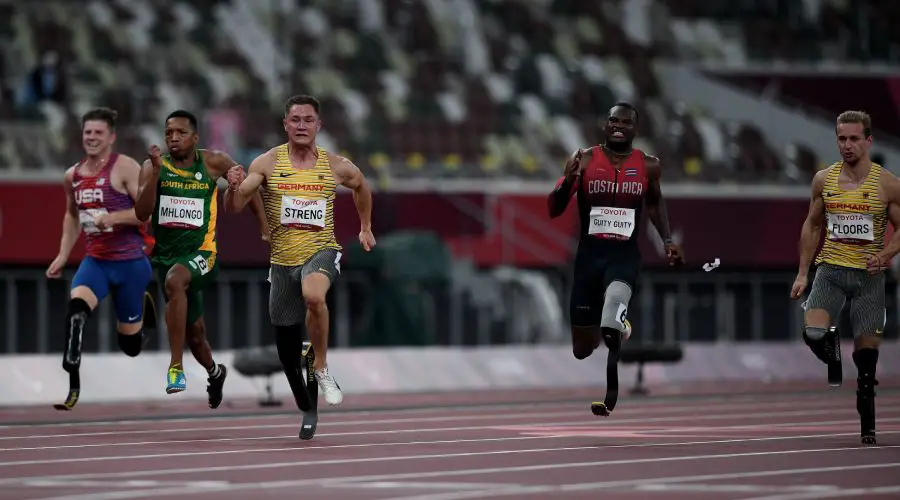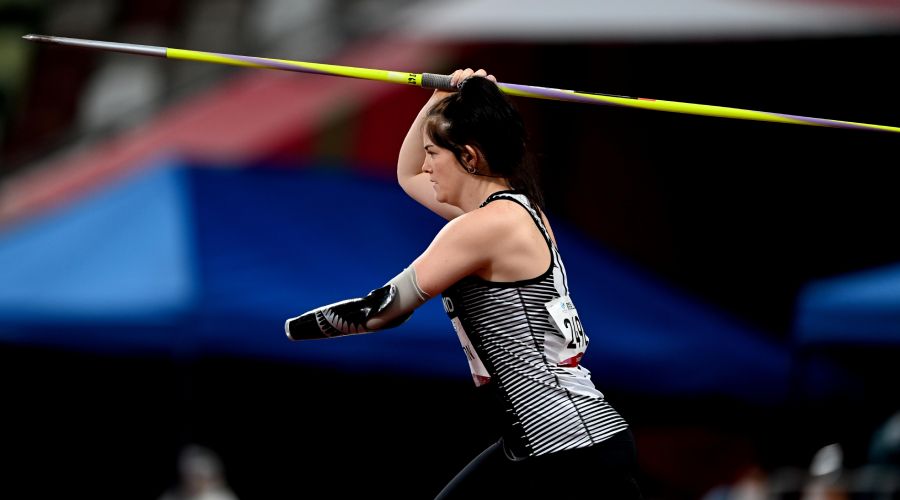The paralympic athletics modalities are very similar to traditional sports, but undergo adaptations to suit athletes with disabilities. We’ve put together a complete guide to help you understand how each one works.
Participate in our free WhatsApp community and receive daily tips, news and trivia from over 50 sports! Click here to join.
How does paralympic athletics work?
First of all, it’s worth clarifying how paralympic athletics works: athletes are grouped into categories according to their functional disabilities, so the functional classification is determined by specialized professionals who assess the physical and functional abilities of each athlete.
Athletes with leg disabilities can use prostheses, adapted wheelchairs or other devices to compete. The equipment is designed to guarantee the athlete’s safety and maintain the integrity of the competition.
As with conventional athletics, Paralympic athletics has specific rules and regulations for each discipline. The sport can be practiced in competitions at national and international level, including the Paralympic Games, world and regional championships, as well as local competitions.
List of paralympic athletics disciplines
The main disciplines of Paralympic athletics include:
- Track races (100m, 200m, 400m, 800m, 1500m, 5000m, 10000m)
- Wheelchair races (100m, 200m, 400m, 800m, 1500m, 5000m, marathon)
- Relay races (4x100m and 4x400m)
- Obstacle Course (100m)
- Weight throw
- Discus throw
- Javelin throw
- High jump
- Long jump
- Triple jump
- Combined tests
Below, we’ll go into detail about each of these modalities, how they work and their particularities.
Track Racing
In paralympic athletics track races, athletes compete over different distances, based on their functional classification categories. They can compete both standing and in wheelchairs.
The races are held on specially prepared tracks, with precise markings and timing equipment to record times accurately. Competitors race side by side, trying to reach the finish line in the shortest time possible.

Barrier races
The paralympic athletics hurdles race is a discipline in which athletes compete over different distances while overcoming barriers along the way.
The main difference with barrier-free races lies in the presence of these obstacles, which require specific jumping or passing techniques.
Wheelchair Racing
In wheelchair racing, athletes compete in specially designed chairs, propelling themselves with their hands. The races take place on tracks similar to those used in conventional races, with distances ranging from 100m to full marathons.
Competitors use propulsion techniques and tactical strategies to maximize speed and efficiency throughout the race, and are grouped into functional classification categories to ensure fair competition.
Relay
The relay is one of the paralympic athletics disciplines in which teams, made up of four athletes, pass a baton to each other. Each athlete covers a certain distance, usually 100m or 400m, depending on the category and competition.
Transitions between athletes require precision and synchronization to avoid penalties for passing outside the transfer zone. Competitors need to work as a team and have a tactical strategy.
Heels
In the distance jump, athletes try to cover as much distance as possible in a single jump, starting from a springboard and landing in a sandpit.
In the high jump, athletes try to pass over a horizontal bar without knocking it over, using a variety of techniques to raise their bodies as high as possible. The aim is to overcome the height of the bar, ensuring that the whole body passes over it without touching it.
Throws
In the weight throw, athletes throw a metal ball as far as possible. To do this, they propel the weight with a series of movements, including body rotation and pushing. Precision, strength and technique are key to achieving a good performance.
Launches
The throwing events are also part of Paralympic athletics and can be done with the discus, javelin or club. Here, strength, technique and coordination are required of the competitors.
In the discus throw, athletes throw a metal or composite disc as far as possible within a marked area. The discus has a sharp edge and a heavier center, which helps stabilize it during flight.
Javelin throwing involves throwing a long, thin rod, usually made of metal or carbon fiber, in an attempt to reach as far as possible. The dart has a sharp point to penetrate the ground when it lands.

The pole vault, meanwhile, involves throwing an elongated pole with the aim of reaching the greatest possible distance. Athletes position themselves in a throwing area and use a similar technique to the javelin throw, involving running movements, body rotation and throwing the arm to get the maximum possible reach.
Combined Tests
The paralympic athletics combined events are competitions that involve a series of individual events held over a period of time, in which athletes accumulate points based on their performance in each event.
In the Paralympic Decathlon, athletes compete in ten events over two days, in a variety of disciplines that test their skills in different areas of athletics:
- 100 meters
- Long jump
- Weight throw
- High jump
- 400 meters
- 100 meters with hurdles
- Discus throw
- Pole vault
- Javelin throw
- 1500 meters
These are the modalities of paralympic athletics. To find out more about this sport and many others, be sure to follow the content available on our website!



